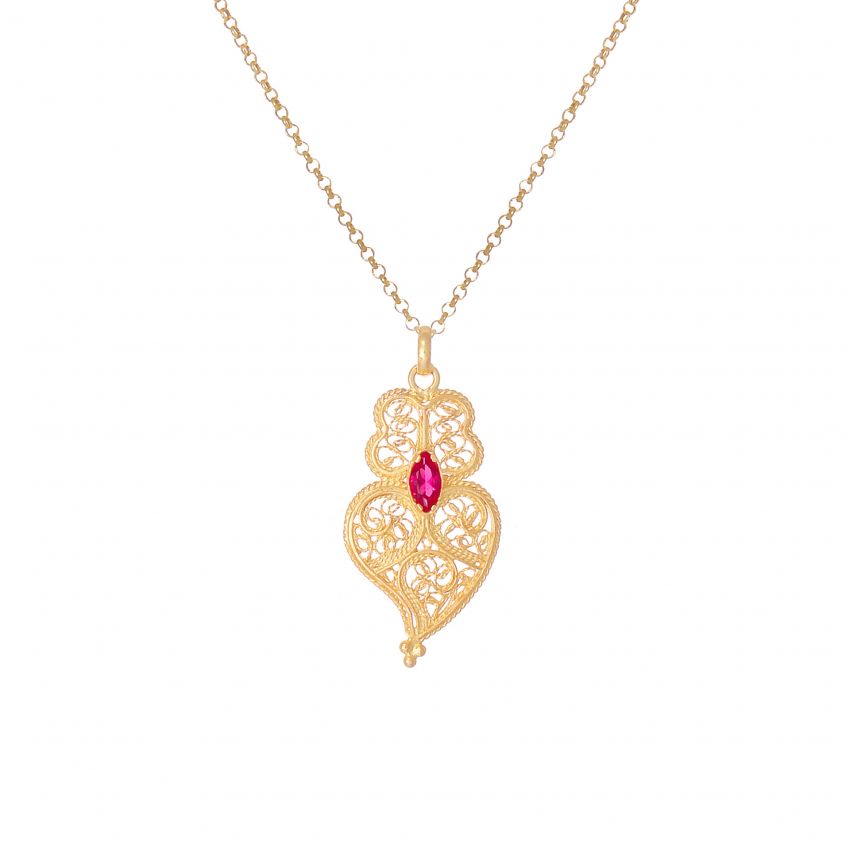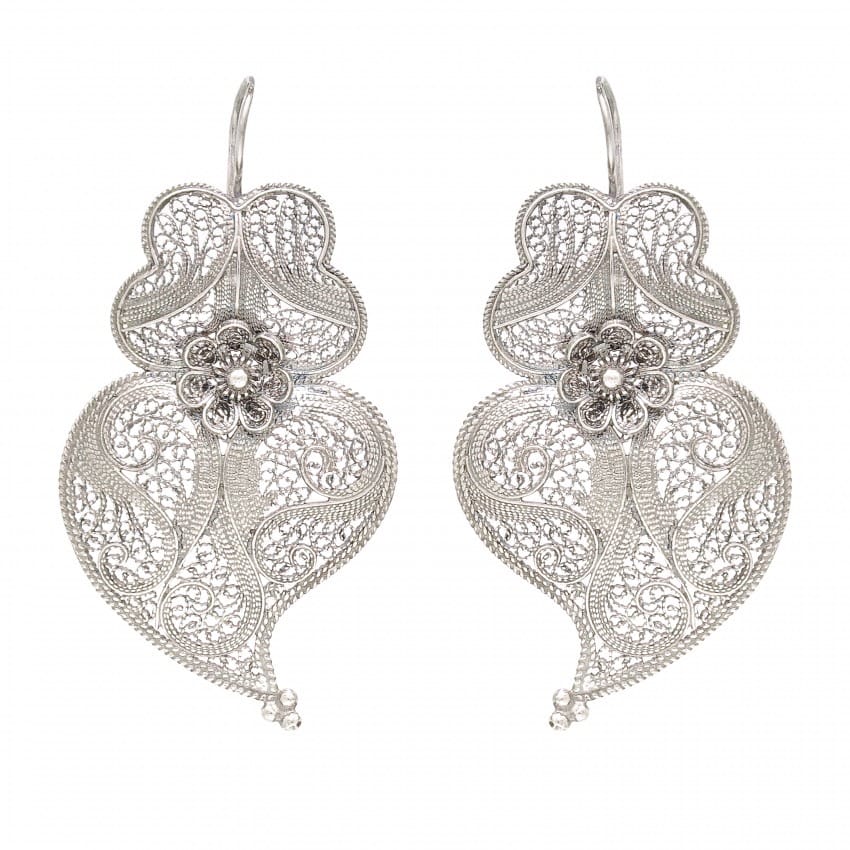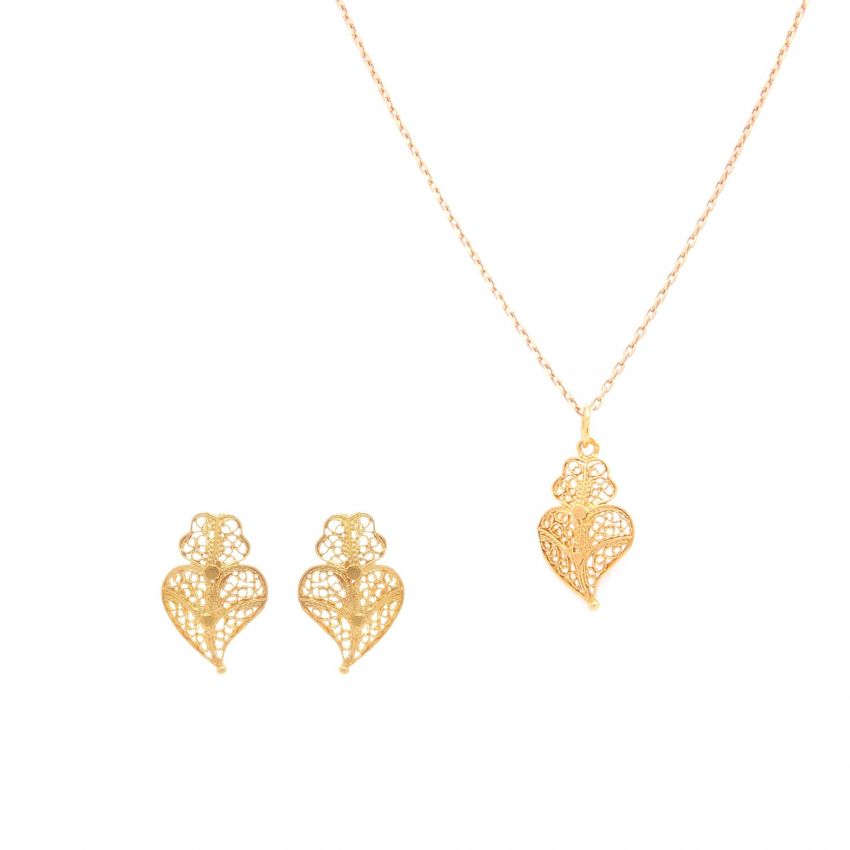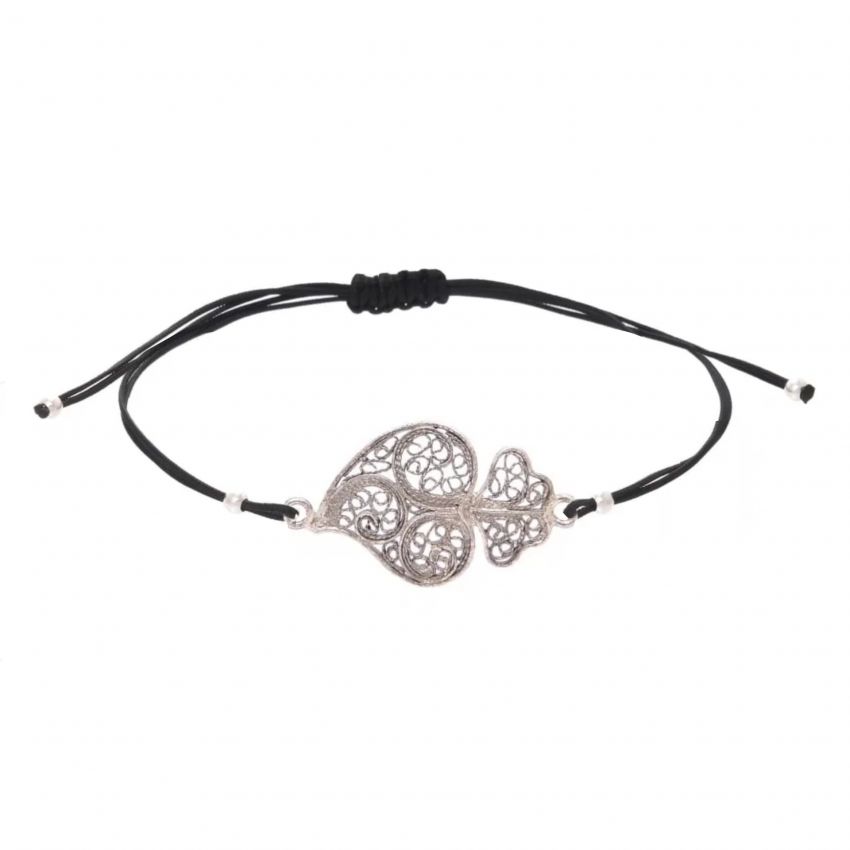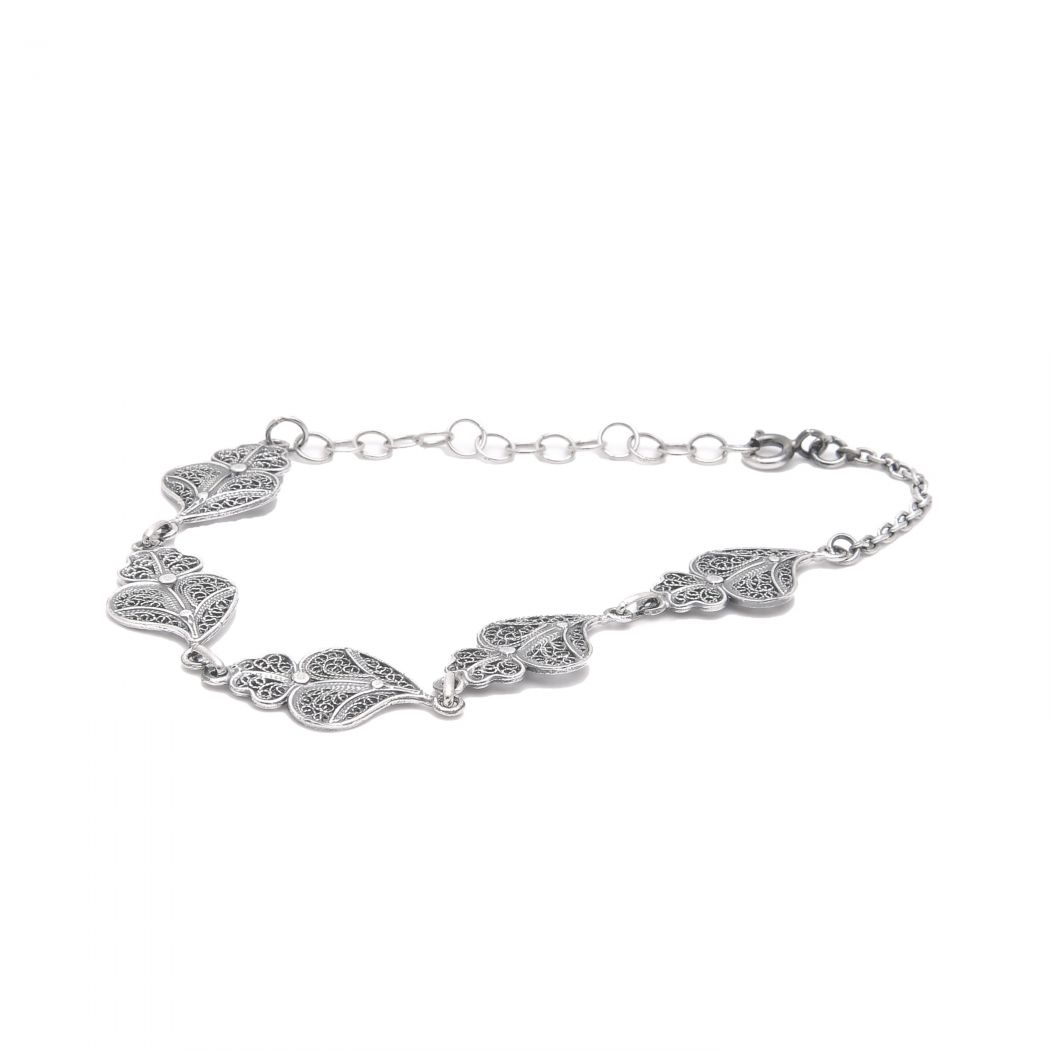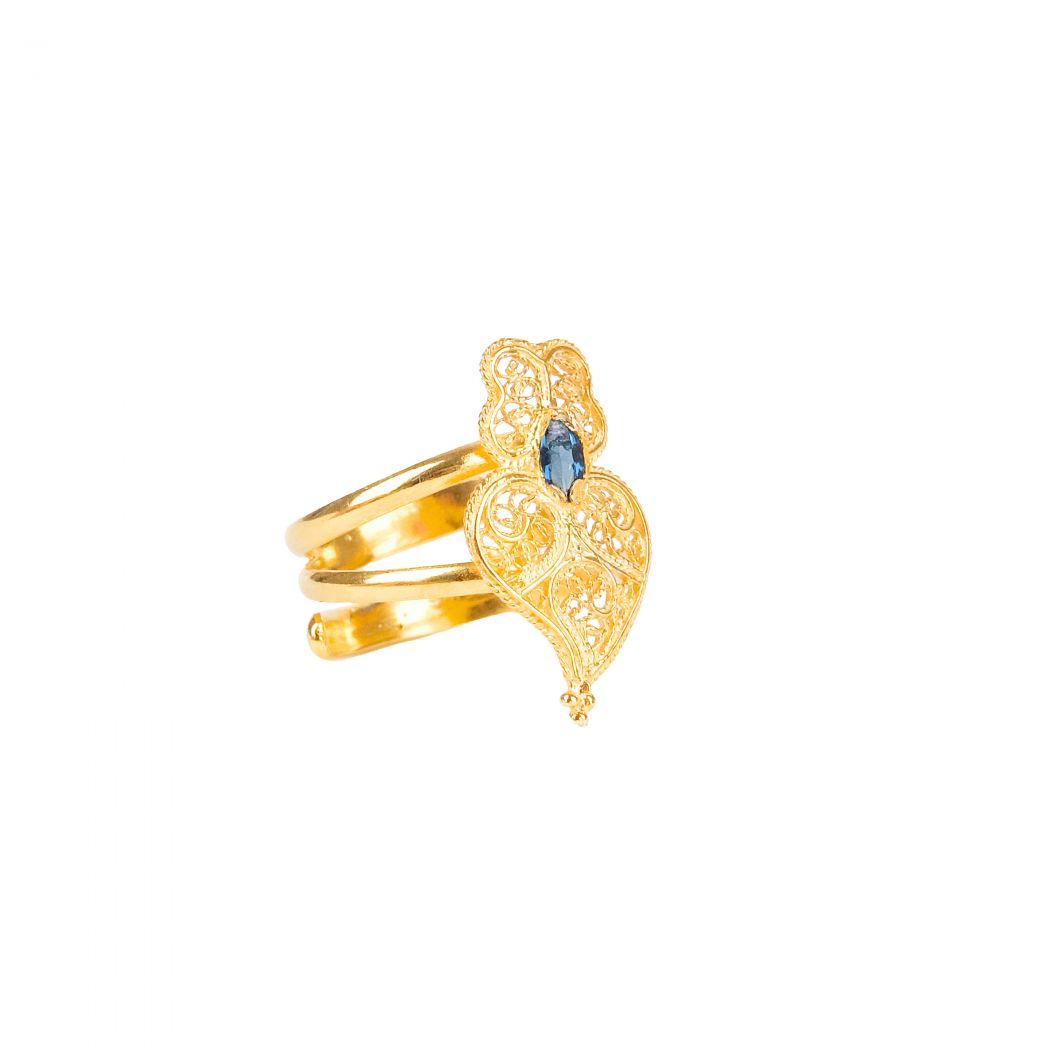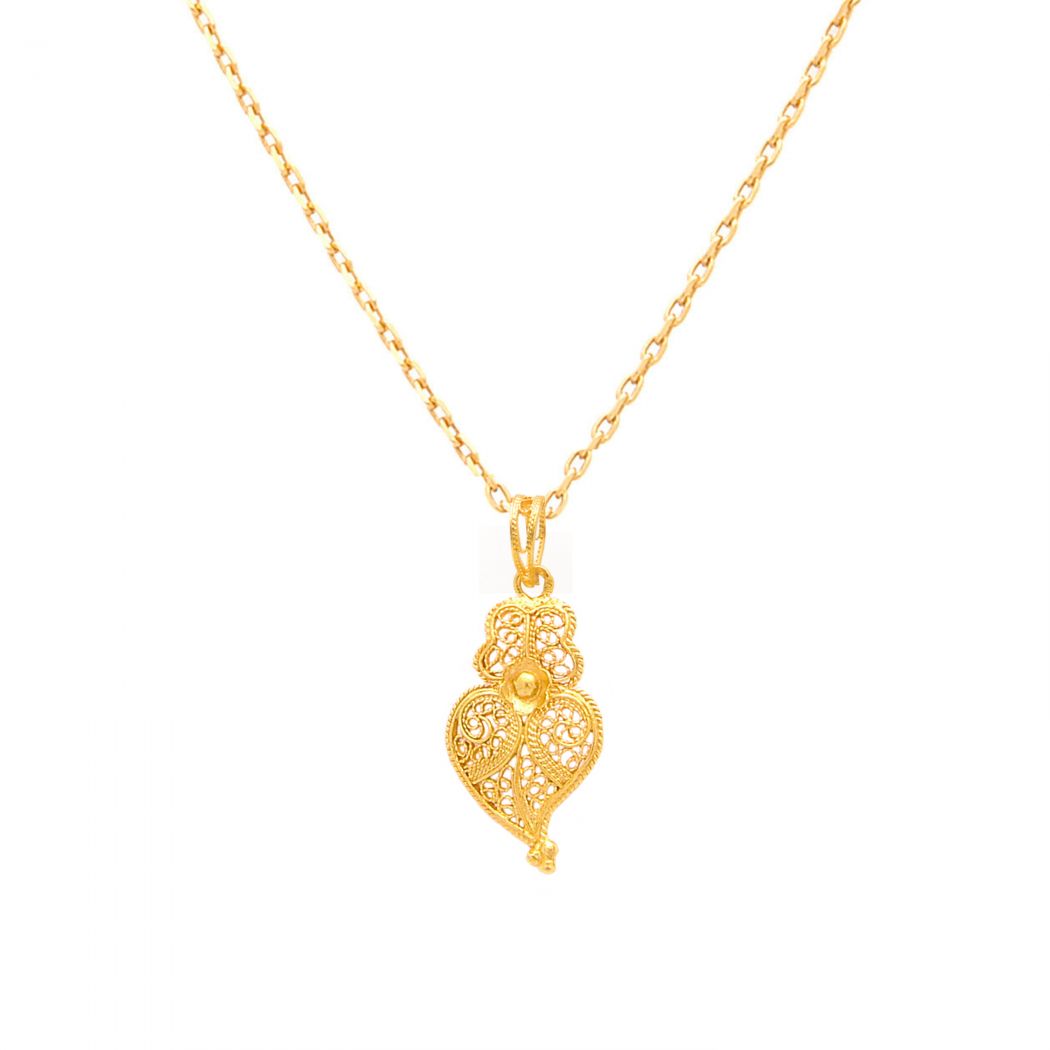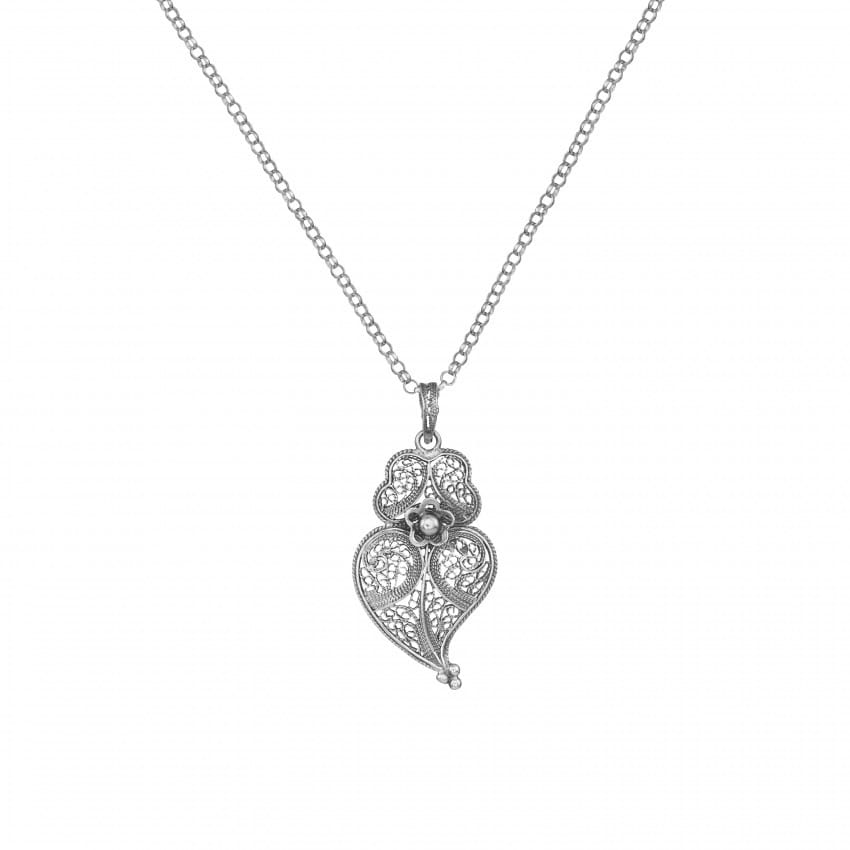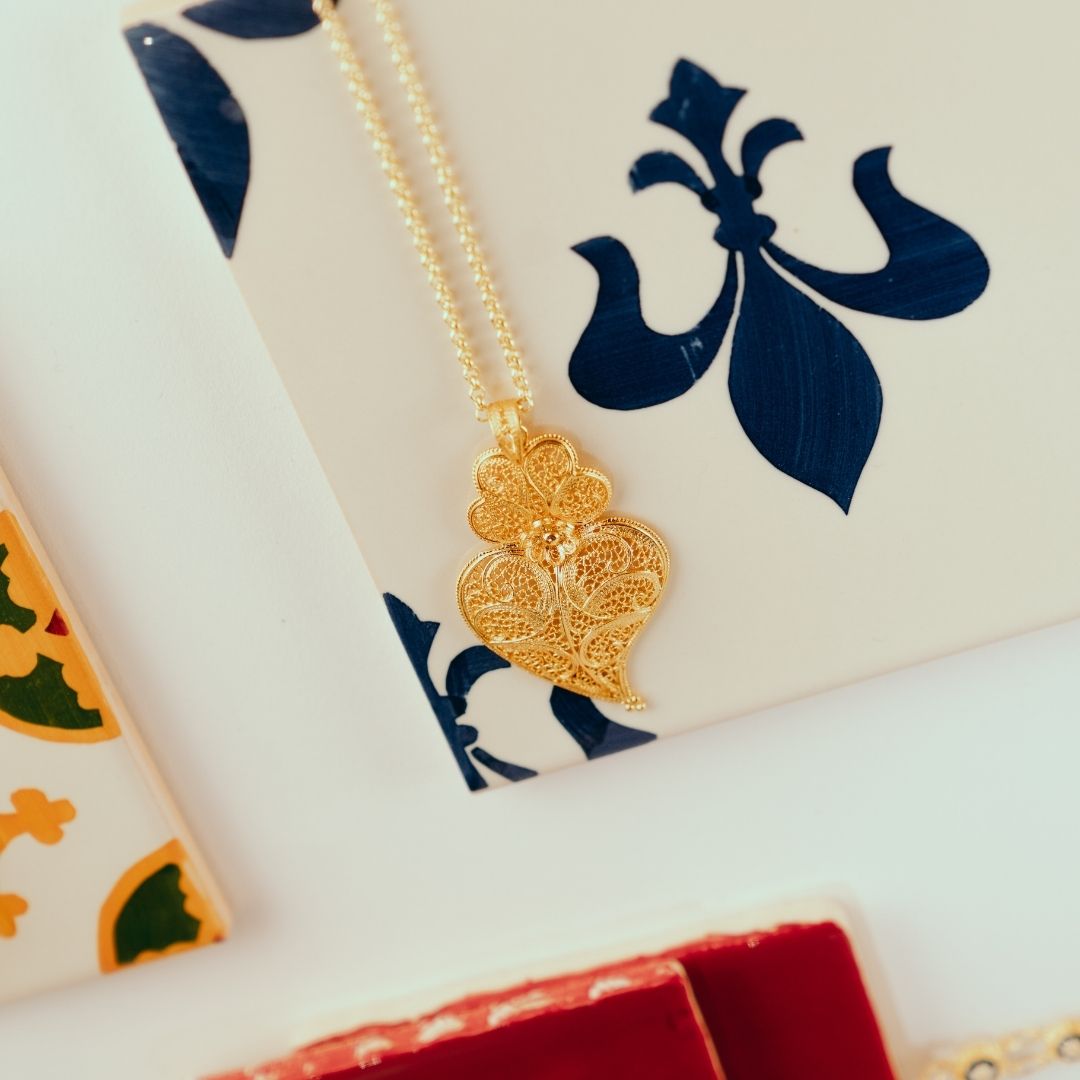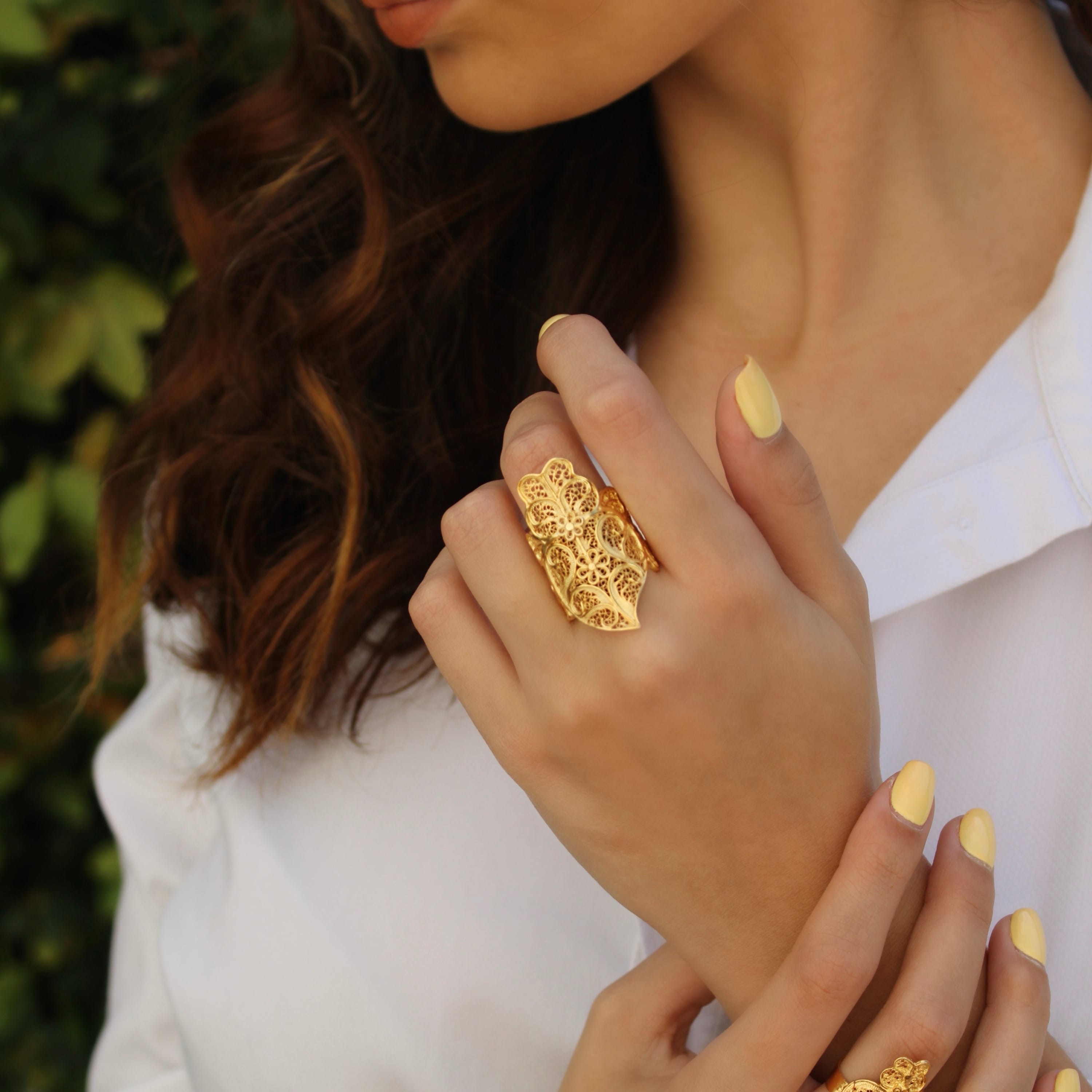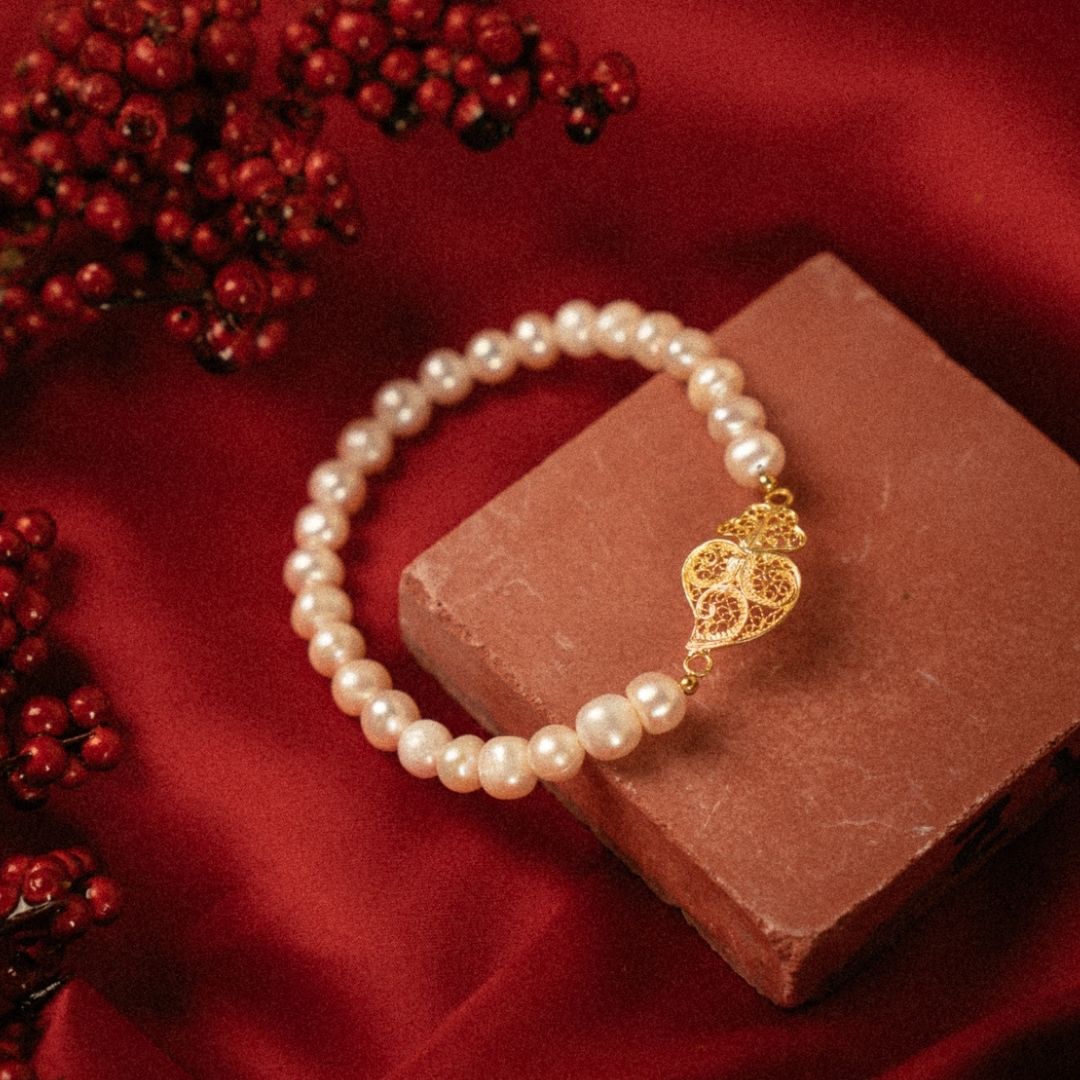- Sem produtos
ADICIONOU AO CARRINHO
CORAÇÃO DE VIANA
CORAÇÃO DE VIANA
HISTÓRIA DO CORAÇÃO DE VIANA
Segundo alguns autores, a rainha D. Maria I terá sido das primeiras a impulsionar o uso deste símbolo, mas o seu uso torna-se mais popular no decorrer do séc. XIX pelas senhoras endinheiradas das famílias burguesas de Viana do Castelo.
No entanto, o seu nome pode-nos induzir em erro! O Coração de Viana foi e tem sido produzido fora de Viana do Castelo, principalmente na vila de Póvoa do Lanhoso e na cidade de Gondomar, onde se concentram muitas das oficinas de ourives.
A cidade de Viana empresta, assim, o seu nome à peça, que se tornou, com o passar dos anos, num elemento quase indispensável nas Romarias da Nª Srª da Agonia, em colares ao peito de quem nelas participa.


Originalmente concebido como uma representação religiosa do amor universal de Deus, daí que o mesmo fosse inicialmente pendurado ao pescoço, próximo do coração.
Mas com o tempo, essa imagética religiosa passou para o campo do profano, passando a significar também o amor entre dois seres apaixonados, e adaptado a outros tipos de adorno como brincos, anéis, etc.
As primeiras representações não eram as que hoje estamos acostumados a ver nas joalharias, em delicada filigrana, mas sim em chapa de ouro batida, mais ou menos trabalhada e decorada. É só mais tarde que passam a ser criados na mais fina arte de ourivesaria portuguesa - a filigrana.
HISTÓRIA DO CORAÇÃO DE VIANA
Segundo alguns autores, a rainha D. Maria I terá sido das primeiras a impulsionar o uso deste símbolo, mas o seu uso torna-se mais popular no decorrer do séc. XIX pelas senhoras endinheiradas das famílias burguesas de Viana do Castelo.

No entanto, o seu nome pode-nos induzir em erro! O Coração de Viana foi e tem sido produzido fora de Viana do Castelo, principalmente na vila de Póvoa do Lanhoso e na cidade de Gondomar, onde se concentram muitas das oficinas de ourives.
A cidade de Viana empresta, assim, o seu nome à peça, que se tornou, com o passar dos anos, num elemento quase indispensável nas Romarias da Nª Srª da Agonia, em colares ao peito de quem nelas participa.

Originalmente concebido como uma representação religiosa do amor universal de Deus, daí que o mesmo fosse inicialmente pendurado ao pescoço, próximo do coração.
Mas com o tempo, essa imagética religiosa passou para o campo do profano, passando a significar também o amor entre dois seres apaixonados, e adaptado a outros tipos de adorno como brincos, anéis, etc.
As primeiras representações não eram as que hoje estamos acostumados a ver nas joalharias, em delicada filigrana, mas sim em chapa de ouro batida, mais ou menos trabalhada e decorada. É só mais tarde que passam a ser criados na mais fina arte de ourivesaria portuguesa - a filigrana.
A ARTE DOS DETALHES
A forma mais clássica do Coração de Viana é composta por quatro partes:

A maior e mais importante, que lhe dá o nome é o coração, propriamente dito, com a sua terminação em bico curvo, apontando para um dos lados.
A maior e mais importante, que lhe dá o nome é o coração, propriamente dito, com a sua terminação em bico curvo, apontando para um dos lados.

No seu topo as chamas, na forma de cornucópias, geralmente em número de quatro.
No seu topo as chamas, na forma de cornucópias, geralmente em número de quatro.

A junção entre as duas partes anteriores que é tão somente a soldadura das mesmas, disfarçada por uma flor subtilmente trabalhada, podendo em alguns casos ser o local para aplicação de pedraria.
A junção entre as duas partes anteriores que é tão somente a soldadura das mesmas, disfarçada por uma flor subtilmente trabalhada, podendo em alguns casos ser o local para aplicação de pedraria.

Por fim, a argola para que se possa colocar num cordão ou volta.
Por fim, a argola para que se possa colocar num cordão ou volta.
CORAÇÃO DE VIANA
OURO 19,2KT
A Coleção Ouro Português, feita em ouro 19,2Kt, é uma seleção de ourivesaria tradicional portuguesa. O ouro português é dos mais puros do mundo e é certificado pela Contrastaria da Casa da Moeda.
Descubra os nossos Corações de Viana em Ouro 19,2kt.
CORAÇÃO DE VIANA
OURO 19,2KT
A Coleção Ouro Português, feita em ouro 19,2Kt, é uma seleção de ourivesaria tradicional portuguesa. O ouro português é dos mais puros do mundo e é certificado pela Contrastaria da Casa da Moeda.
Descubra os nossos Corações de Viana em Ouro 19,2kt.
CORAÇÃO DE VIANA
OURO 19,2KT
A Coleção Ouro Português, feita em ouro 19,2Kt, é uma seleção de ourivesaria tradicional portuguesa. O ouro português é dos mais puros do mundo e é certificado pela Contrastaria da Casa da Moeda.
Descubra os nossos Corações de Viana em Ouro 19,2kt.


